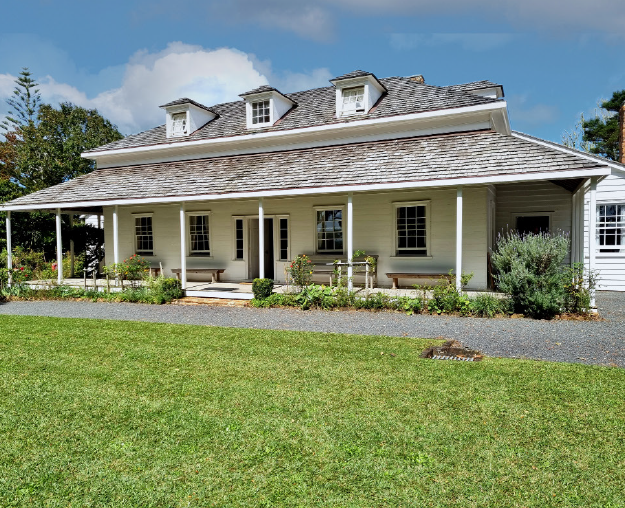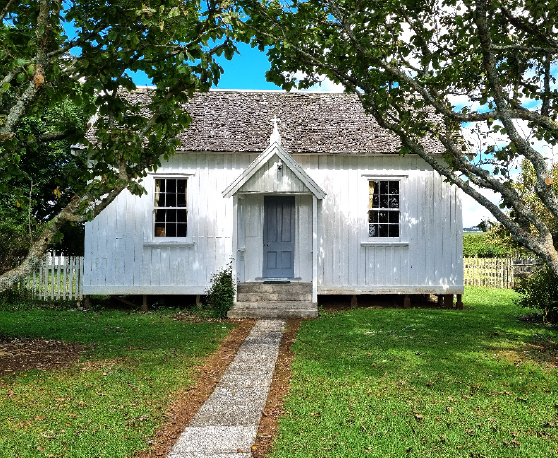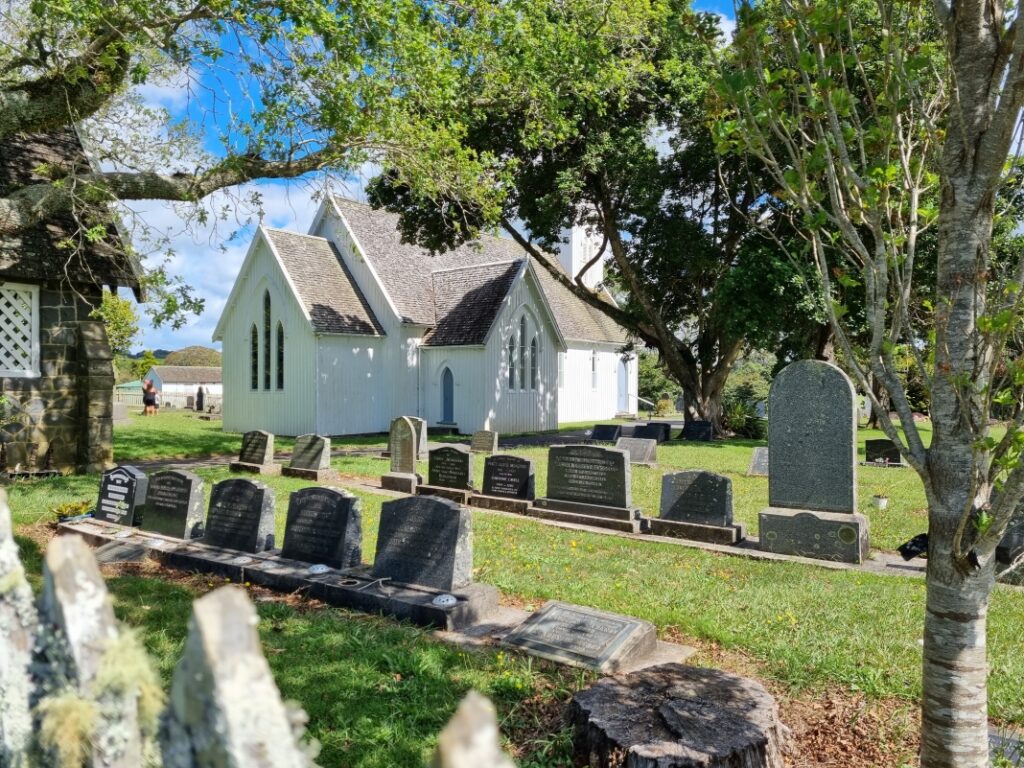
It was fourth time lucky for HELEN PERRY when she winged her way north to Paihia after Covid-19 disruptions meant cancelling a planned holiday three times! Whilst enjoying the Bay of Islands’ she visited Te Waimate Mission which she found to have a link with Howick.
From the outset I found the Te Waimate Mission House history, fascinating. Built in 1831, it is the country’s second oldest building while its internal staircase is said to be the oldest in the country. Furthermore, until 2018, a more than 170 year old oak tree in the garden was also thought to be the oldest oak tree in New Zealand. Sadly it came crashing down in a winter storm three years ago.
For many history buffs, delving into the site’s past reveals a chequered history of highs and lows with prominent church leaders, the famous Maori chief Hone Heke, nauturalist Charles Darwin and even a renowned Hollywood actress all leaving their mark on the homestead.
Originally established by the Rev Samuel Marsden in 1831/32 to grow crops for the Church Missionary Society and to train Maori to farm in a ‘civilised’ way, the early settlement included a church, blacksmith and carpentry shops, printing works, watermill, brickyard, schools, barns, stables and implement sheds plus several cottages.
The now famous Stone Store at KeriKeri was erected to house an anticipated yield of grain and flour from the mission, it’s site picked for its rich volcanic soils. However, the work needed to convert unbroken land into a traditional English farmscape was incredibly laborious. It took a toll on the missionaries and their equipment including their ploughs which broke regularly.
While considered a great experiment in establishing a food system in the antipodes, nevertheless, the process was trial and error. On the other hand, flowers and vegetables plus ornamental and fruit trees grew abundantly. When former gunsmith turned missionary, George and his wife, Martha lived in the house during its early days, the enterprise flourished.
In fact, George was one of four churchmen responsible for seeing the mission station at Te Waimate North was established. Yet, despite everyone’s best efforts, it was in decline by 1840.
Bishop Selwyn moved into the main mission house in 1842 and soon after, founded St John’s College there. Which was part theological college, part high school and part technical institute, catering for both Maori and Pakeha students.
Interestingly, Bishop Selwyn, together with Governor George Grey and others, choose the site for Howick village in 1847.
But, back to the Mission – by 1844 the bishop and the college had relocated to Auckland and, following the disastrous Battle of Ohaeawai, the Mission became a military outpost.
After occupation by British soldiers, the buildings fell into disrepair and were sold.
The house remained the property of the church and served as a vicarage until the 1940’s although various chattels and land were sold off during the previous century.
It wasn’t until the New Zealand Historic Places Trust (now Heritage New Zealand Pouhere Taonga) bought the property in the early 1960’s that restoration began and, today, the remaining mission house, adjacent church and school house continue to attract visitors.
Whilst the mission’s background is fascinating I was intrigued to later learn the site was used for the 1986 movie, Mesmerized, starring Jodie Foster.
It seems the staircase and parlour figured significantly in the film, which was based on the 19th century case of Victoria Thompson, who was acquitted of murdering her husband. Unfortunately, on researching some details about the film, it seems critics gave it the ‘thumbs down’ saying it was, perhaps, Jodie Foster’s worst screen performance.
Success may have eluded that particular production but around 2007-2008 another crew was on site to film, Lost in Translation – not the 2003 Bill Murray movie but a documentary focusing on the ‘good faith.’
In wandering through the mission house, the big surprise for me was the spacious rooms and high ceilings. The bed where George and Martha Clarke slept is still there as are many artefacts and hand-written records. At one time the kitchen’s internal fireplace was moved outside but the restoration project saw it re-positioned in its original interior site.
It would be easy to linger long as there is plenty of information placed throughout the house but visitors should ensure they also inspect the old school house next door and the beautiful church where special ceremonies and a monthly service continue to be held. I particularly enjoyed wandering the graveyard where headstones spoke of the past and the present.
I must mention that as we intended to visit at least one other heritage site, namely Pompalier Mission at Russell, it made sense to join Heritage New Zealand Pouhere Taonga which cost us $50 as a senior couple for one year.


